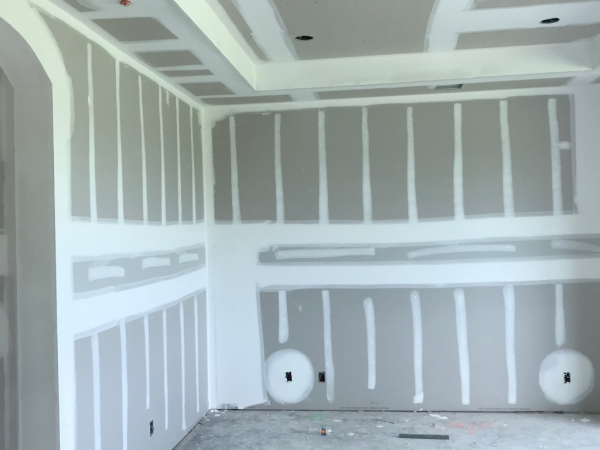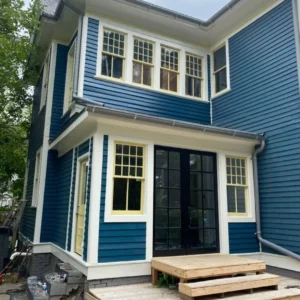Fire safety is a crucial aspect of maintaining a secure and protected home environment. Drywall, also known as gypsum board or plasterboard, is a commonly used building material that plays a significant role in fire protection. Understanding drywall fire ratings is essential for homeowners and builders to make informed decisions about the level of fire safety in their homes. In this comprehensive guide, we will explore the concept of drywall fire ratings, their significance in fire safety, and how to enhance the fire-resistant properties of your home using appropriate drywall solutions.
What are Drywall Fire Ratings?
Drywall fire ratings refer to the classification of drywall based on its ability to resist fire and its capacity to act as a barrier against flames and smoke. The ratings are assigned based on standardized fire tests that assess the drywall’s performance under various fire exposure conditions.
Solution: Familiarize Yourself with Fire Ratings
Drywall fire ratings are usually denoted by a combination of letters and numbers, such as “Type X,” “Type C,” or “1 hour.” Understanding the specific fire rating will help you select the right drywall for different areas of your home based on fire safety requirements.
- The Importance of Fire Ratings in Home Fire Safety
Fire incidents can spread rapidly in homes, putting lives and property at risk. Drywall fire ratings play a vital role in containing and slowing down the spread of fire, providing occupants with valuable time to evacuate safely.
Solution: Use Fire-Rated Drywall Where Needed
In areas where fire safety is a top priority, such as near kitchens, fireplaces, electrical panels, or in shared walls between living spaces, consider using fire-rated drywall to enhance fire protection and minimize fire spread.
- Types of Fire-Rated Drywall
Various types of fire-rated drywall are available, each designed to provide a specific level of fire resistance. Common types include Type X, Type C, and Type C fire-resistant drywall.
Solution: Choose the Appropriate Fire-Rated Drywall
Consider the fire protection requirements of different areas in your home and choose the appropriate fire-rated drywall. For instance, Type X drywall is suitable for most residential applications and provides enhanced fire resistance compared to standard drywall.
- Fire Ratings and Assemblies
In addition to individual drywall panels, fire ratings also apply to wall and ceiling assemblies, which include the drywall, framing, and insulation materials. Fire-rated assemblies are tested as a complete system to assess their fire-resistant properties.
Solution: Select Tested and Approved Assemblies
Choose tested and approved fire-rated assemblies to ensure optimal fire protection. These assemblies have been rigorously evaluated to meet specific fire safety standards, providing peace of mind for homeowners.
- Proper Installation and Joint Treatment
Even with fire-rated drywall, the effectiveness of the fire-resistant barrier depends on proper installation and joint treatment. Gaps and cracks in the drywall can compromise the overall fire protection.
Solution: Hire Experienced Installers
Hire experienced professionals for the installation and joint treatment of fire-rated drywall. Properly sealed joints and tightly fitted drywall will enhance the fire-resistant properties of the system.
- Insulation and Fire Resistance
Insulation materials can complement fire-rated drywall, offering additional fire protection by slowing down the transfer of heat and flames through the walls and ceilings.
Solution: Opt for Fire-Resistant Insulation
Choose fire-resistant insulation materials that provide enhanced thermal protection. Materials like mineral wool, fiberglass, and cellulose insulation can help enhance fire resistance in wall and ceiling assemblies.
- Fire Safety in Multifamily Dwellings
In multifamily dwellings, such as apartment buildings and condominiums, fire safety is of utmost importance to protect the lives and property of multiple residents.
Solution: Incorporate Fire-Rated Partitions and Assemblies
Use fire-rated drywall partitions and assemblies between individual units and shared spaces in multifamily dwellings. This ensures compartmentalization, preventing the rapid spread of fire from one unit to another.
- Regular Fire Safety Inspections
Fire safety is an ongoing process that requires regular inspections and maintenance. Regularly inspecting fire-rated drywall and related fire safety measures ensures their effectiveness over time.
Solution: Conduct Routine Inspections
Schedule routine fire safety inspections to check the condition of fire-rated drywall, insulation, and fire-stop systems. Address any issues promptly to maintain optimal fire protection in your home.
Understanding drywall fire ratings is a critical step in enhancing fire safety in your home. By selecting the appropriate fire-rated drywall and assemblies, you can create effective barriers against flames and smoke, providing valuable time for safe evacuation during a fire incident. Proper installation, joint treatment, and the use of fire-resistant insulation further reinforce the fire-resistant properties of drywall systems. In multifamily dwellings, fire-rated partitions and assemblies are essential to protect residents and property. Regular inspections and maintenance ensure the continued effectiveness of fire-rated drywall in providing enhanced fire protection. Prioritizing fire safety and incorporating fire-rated drywall solutions will give you peace of mind, knowing that your home is well-prepared to face any fire-related challenges.
























